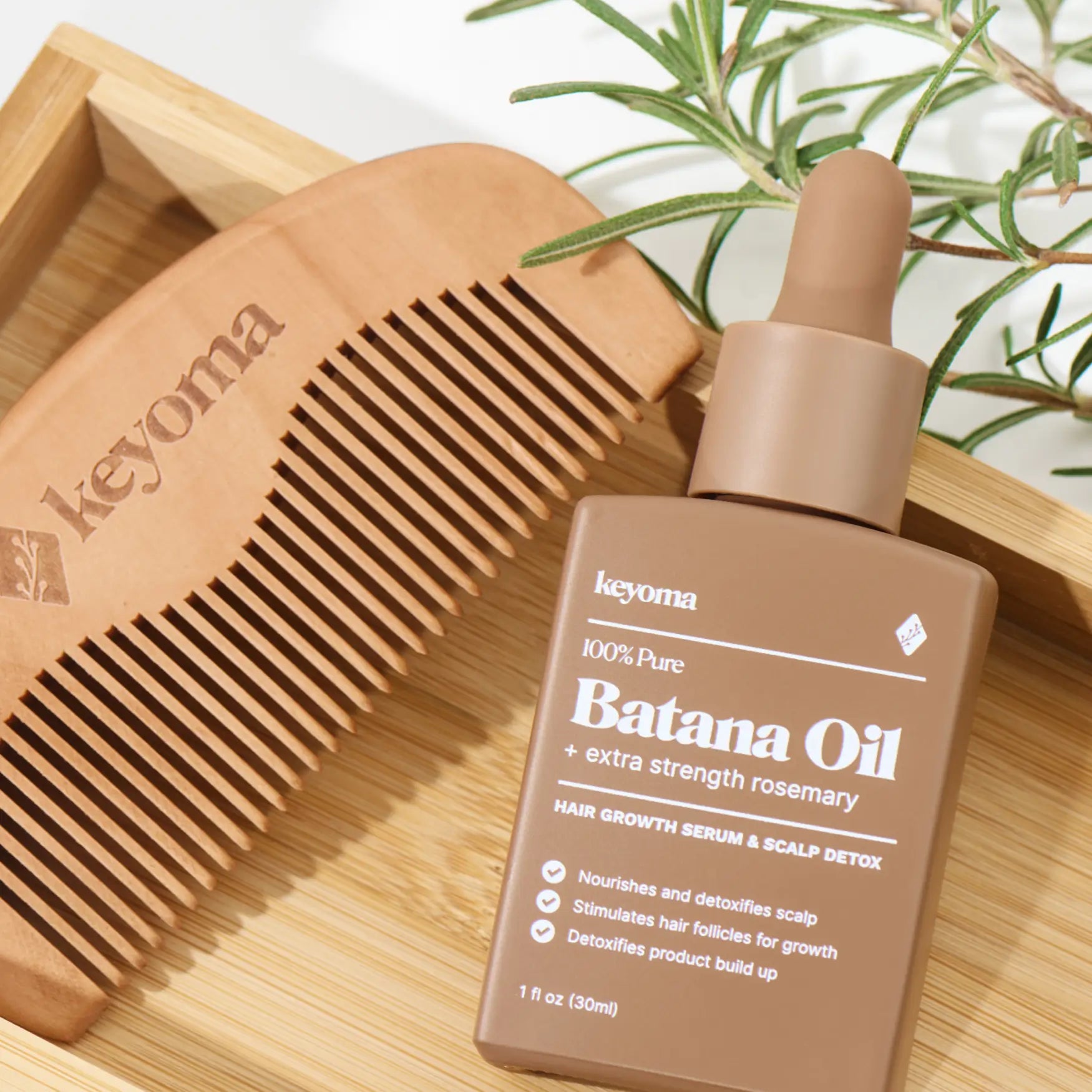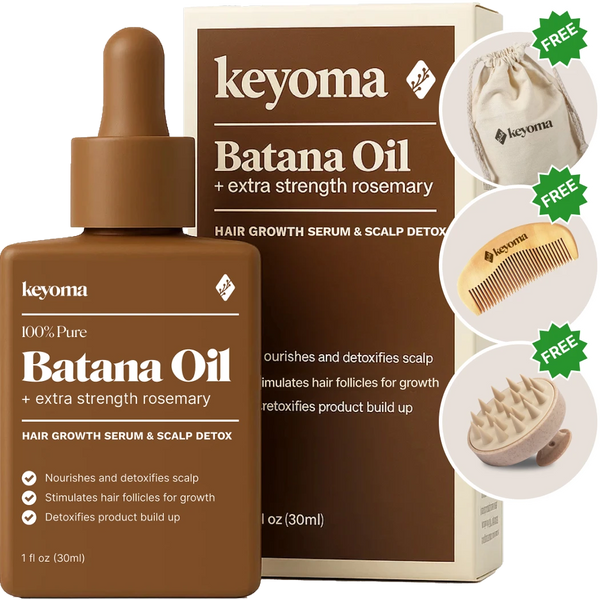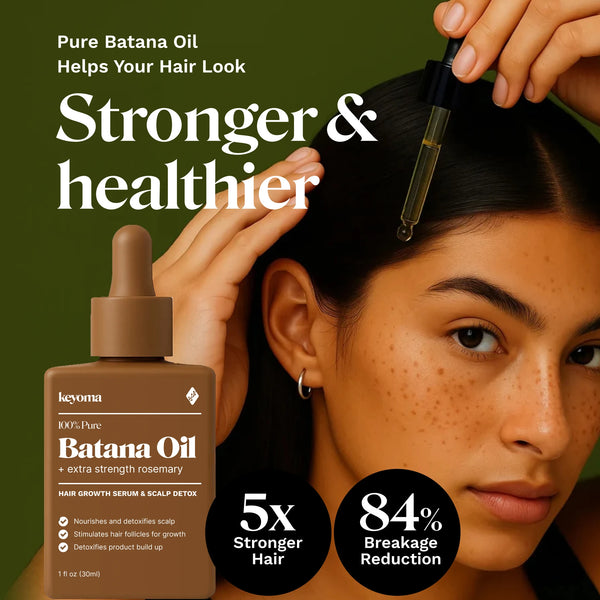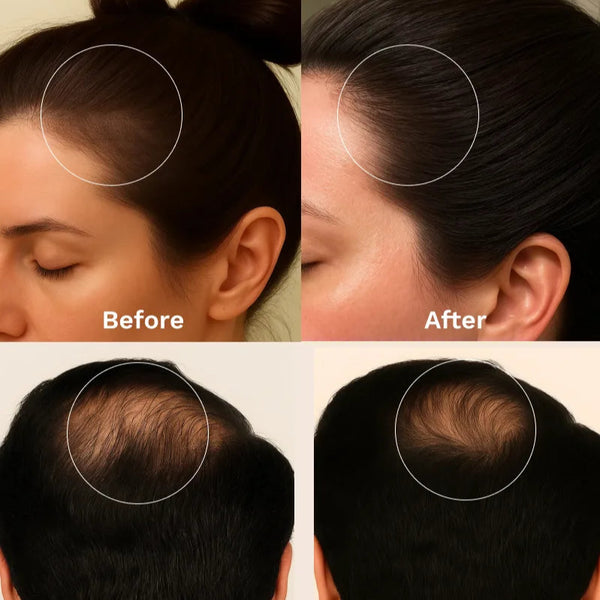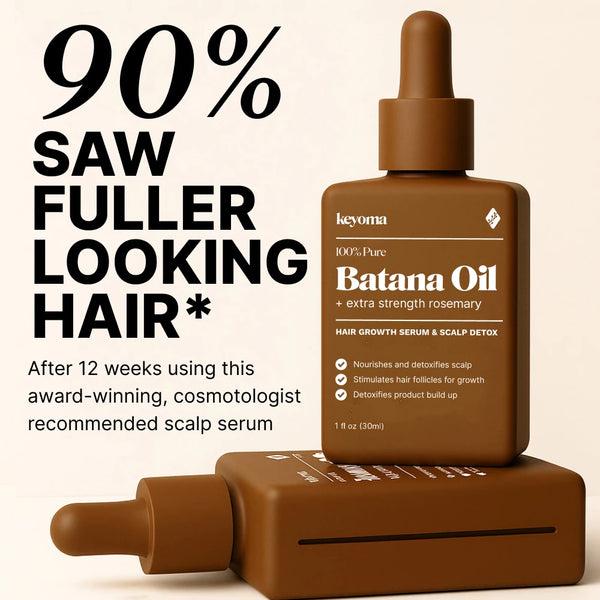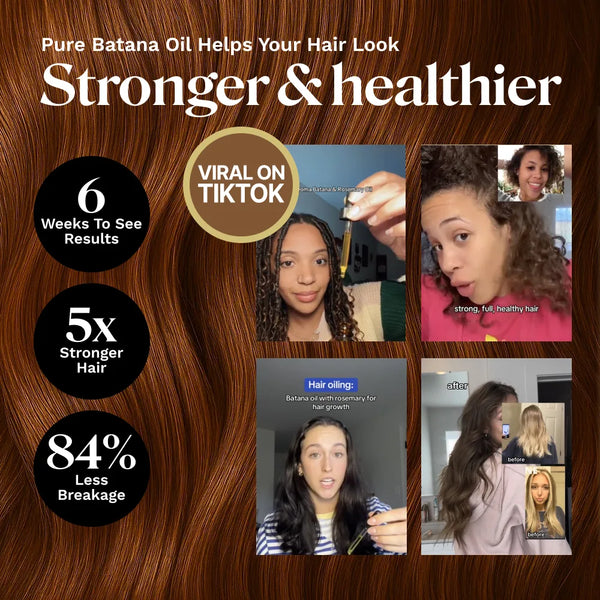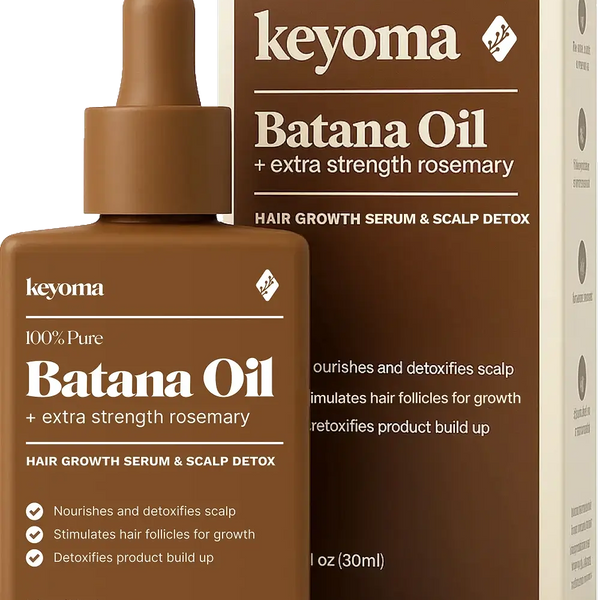How to Repair Chemically Damaged Hair: Natural Products and Simple Habits That Work
Published on
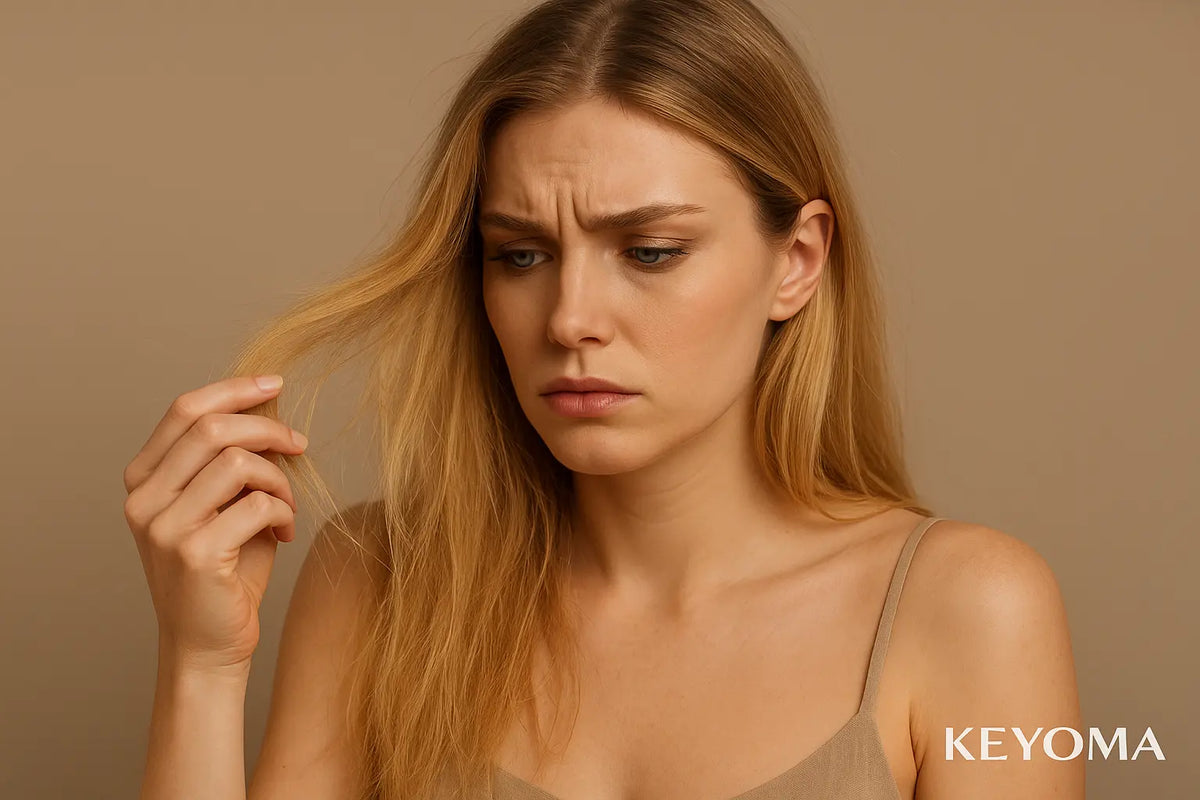
In this article
We’ve all been there, seeing our favorite TV character or celebrity’s new look and thinking, “That’s it. That’s the hair.” And to scratch that irresistible itch, you booked an appointment, spent hours at the salon, and walked out feeling like a brand-new, beautiful, confident version of yourself.
Fast forward to a couple of sessions to maintain the look—or switch things up every few months—and suddenly the shine's gone. Your ends feel rough, and your strands snap easier than they used to.
That’s the hidden price of keeping up with those salon looks.
Bleach, relaxers, and color treatments may give you that instant transformation, but over time, they wear down your hair’s natural strength and moisture.
The good news is, damage doesn’t mean doomed. In this guide, I’m sharing what’s actually helped me—and what I’ve learned from hair experts over the years—repair chemically damaged hair and bring it back to feeling soft, strong, and healthy again.
Let's get into it!
What Does Chemical Hair Damage Look Like?
Up close, chemically damaged hair refers to strands whose internal structure—the cuticle and cortex specifically—has been weakened or altered by harsh chemical treatments like bleaching, perming, relaxing, or frequent coloring.
When the hair’s natural balance is disturbed this way, its outer layer becomes rough and porous, and the inner cortex loses strength.
So, if you’re someone who loves (or has loved) experimenting with one or a mix of these, you’ve probably seen—or will eventually see—the signs of chemical damage, such as:
-
Rough, brittle texture: Hair feels coarse or straw-like to the touch instead of smooth.
-
Frizz that won’t quit: Even after conditioning or applying oils, strands stay puffy and uneven.
-
Split ends and breakage: Ends snap easily, and you’ll notice shorter broken strands around the crown.
-
Dullness and loss of shine: The cuticle no longer reflects light evenly, so hair looks flat and lifeless.
-
Tangles and knots: Damaged cuticles catch onto each other, making detangling painful and time-consuming.
-
Increased porosity: Hair soaks up water quickly but also dries out just as fast.
-
Color fading too soon: Dyed shades lose vibrancy after only a few washes because the pigment can’t stay sealed in.
Each chemical process works by lifting the protective cuticle to change your hair’s shape or color. But with repeated or overly harsh treatments, that cuticle stays lifted, leaving the cortex exposed.
That’s when protein loss, moisture imbalance, and porosity issues start to show—all those telltale signs of chemical damage you just read above.
How Chemical Damage Affects Hair
Once your hair’s internal structure is compromised, the effects go deeper than just appearance. Here’s what’s happening beneath the surface and how those "invisible" changes turn into the signs of chemical damage we mentioned earlier:
-
Raised cuticles: The outer layer lifts and roughens, allowing moisture to escape and leaving hair dry, dull, and frizzy.
-
Weakened cortex: This inner core gives hair its strength and shape. Once it’s exposed, strands lose resilience and snap more easily.
-
Protein loss: Bleach and color treatments break down keratin bonds, weakening the strand’s entire framework.
-
Loss of elasticity: Healthy hair stretches slightly and bounces back. Damaged hair, on the other hand, just breaks.
-
Imbalanced porosity: Overprocessed hair either absorbs too much water or repels it completely, making it harder to hydrate or style evenly.
-
Disrupted pH: Chemical treatments alter the scalp and hair’s natural acidity, preventing the cuticle from sealing properly after washing or styling.
That’s why even after you’ve rinsed out the bleach or color, the damage continues—unless you actively work to rebuild and rehydrate those weakened structures.
How to Repair Chemically Damaged Hair
Stop Chemical Processing Immediately
The very first (and most important) step in repairing chemically damaged hair is simple: stop what’s causing the damage in the first place.
Because if you're still pouring bleach onto broken bonds, no mask, oil, or protein treatment in the world can save it.
Chemically processed hair needs time to rest and heal. That means hitting pause on future bleaching, relaxing, perming, or coloring sessions, at least until your hair regains some of its strength.
If possible, go back to your natural hair color or texture. I know that thought might make you cringe, but here’s the truth: growing it out is tough, yet it’s the only real way to turn things around.
Alternate Protein and Moisture Masks
Damaged hair suffers from both protein loss (from chemical breakdown) and moisture loss (from raised cuticles and disrupted porosity). So, it only makes sense to alternate between the two.
And yes, alternate—that part’s non-negotiable. Rely only on protein, and your hair can turn stiff and brittle. Go all-in on moisture, and strands may feel soft at first but stay weak inside, snapping easily once stretched.
All that said, start with a protein treatment once a week, then follow with a deep moisture mask on your next wash day to restore hydration and balance.
Rinse With Cool or Lukewarm Water
When your hair’s already stressed from chemical treatments, using hot water—no matter how relaxing it feels—can only make things worse. In fact, it’s a quiet culprit behind frizz, dryness, and accelerated cuticle damage.
Here’s the thing: warm water helps lift the cuticle layer slightly, which is fine during shampooing since it allows better product penetration. But finishing your routine with cool or lukewarm water helps those lifted scales flatten and seal back against the strand.
A smoother cuticle reflects light better, holds onto moisture longer, preserves color, and protects the inner cortex from environmental stress.
Apply Leave-In Conditioner
Unlike rinse-out conditioners, leave-ins stay on the strands after your wash routine, forming a lightweight, invisible coat that shields your hair from dryness and environmental stressors.
For this reason, they’re non-negotiable, especially since chemically damaged hair loses moisture faster than healthy hair.
Apply a nickel- to quarter-sized amount to the mid-lengths and ends, then use a wide-tooth comb or detangling brush to distribute it evenly through the strands.
When checking labels, look for leave-ins with hydrolyzed protein and humectants like glycerin or aloe, particularly if your hair is both porous and dry. And always choose pH-balanced, alcohol-free formulas to avoid further damage.
Apply Natural Hair Nourishing Oils
Hair nourishing oils help repair damaged hair mainly by sealing in moisture—a crucial step since chemically treated hair often struggles to retain hydration due to raised cuticles and weakened bonds.
Think of them as daily multivitamins for your hair. They don’t reverse damage on their own, but they protect what you’re rebuilding. They’re a great supplement to the habits and treatments we’ve already covered.
Batana oil infused with rosemary is one of my personal go-tos. It’s rich in essential fatty acids, antioxidants, and anti-inflammatory compounds that calm the scalp and soften the strands, perhaps the very reasons it’s worked wonders on my hair for years.
Of course, classics like coconut, castor, and jojoba oils all work too. It really comes down to how your hair responds. If it works, it works.
However, technique makes all the difference. Apply it wrong, and even the best oil can make things go south fast. Keep these pointers in mind:
-
Apply on slightly damp or dry hair. Applying on damp hair helps trap moisture, while dry hair application adds shine and protection.
-
Use a few drops or up to a dime-sized amount. Too much oil can weigh hair down and cause buildup or dullness.
-
Layer after leave-in conditioner to lock in moisture and add a smooth, polished finish.
Massage Scalp Gently to Stimulate Circulation
Scalp massage is one of the easiest, most low-effort ways to support the growth and recovery of chemically damaged hair.
This simple 3- to 5-minute habit helps increase blood flow to the scalp, delivering more oxygen and nutrients directly to your hair follicles.
When doing so, use your fingertips, not your nails. Gently press and move in small circular motions across your entire scalp.
And remember those nourishing oils we mentioned earlier? They’re perfect to pair with scalp massages. This combo boosts the hair benefits while making the whole experience a lot more soothing and relaxing.
Trim Split Ends Regularly
No matter how good your hair masks are or how nourishing your oils feel, if you don’t trim your split ends, the damage will keep traveling upward, weakening more length and eventually causing breakage.
That’s why regular trims, even small ones, are a must in any hair repair routine. By trimming them early, you stop the damage in its tracks and give the healthier parts of your hair a better chance at thriving.
This doesn’t mean chopping off inches. A simple dusting or micro-trim every 8 to 12 weeks is often enough to remove damage without sacrificing length.
Eat Nutrient-Rich Foods
Going back to basics, remember that hair is made primarily of keratin—a protein built from amino acids. Chemical treatments can strip away this protein structure, along with the natural lipids that protect each strand.
That said, one of the best ways to help—aside from topical care—is by replenishing those lost proteins through your diet. Pay close attention to these key nutrients:
-
Protein: Eggs, chicken, Greek yogurt, lentils, and fish (especially salmon)
-
Iron: Spinach, beef, tofu, and legumes—especially important for women who menstruate
-
Zinc and Biotin: Pumpkin seeds, almonds, oats, and eggs
-
Vitamin C: Citrus, berries, and bell peppers to aid iron absorption
-
Omega-3s: Chia seeds, walnuts, flaxseeds, and fatty fish to reduce inflammation and nourish the scalp
-
Vitamin D: Mushrooms and fortified dairy or plant-based milk
And one more thing: hydration counts, too. Water keeps your follicles supple and supports nutrient transport throughout your scalp. Aim for at least 8 glasses daily, or more if you’re active.
Sleep On a Satin or Silk Pillowcase
It might not look like much, but this small change can make a big difference, especially for chemically damaged hair.
Cotton, particularly rough or low-thread-count types, creates friction as your head moves across it at night. That friction accelerates breakage—something damaged hair simply can’t afford.
Switching to satin or silk gives you a smoother surface. These fabrics let your hair glide instead of catch and tear.
Also, don’t forget to wash your pillowcases weekly. Oil, sweat, and product buildup can cling to the fabric, which only worsens damage over time.
Avoid These Habits That Make Chemical Hair Damage Worse
Repairing damaged hair isn’t just about what you do. It’s also about what you don’t, especially when certain everyday habits can quietly undo all the progress you’re trying to make.
That’s why being mindful of these common “don’ts” can be just as important as your deep conditioning routine:
-
Don’t brush your hair while wet. Wet hair is in its most fragile state, especially if it’s chemically damaged. Brushing it roughly can stretch the strand and snap it right in half.
-
Don’t use regular towels. Thick cotton towels create friction that lifts and frays the cuticle, leading to more breakage. Microfiber towels or soft cotton T-shirts are gentler and help reduce frizz.
-
Don’t use old heat tools. As styling tools age, their temperature controls become unreliable. An old flat iron that used to glide may now fry your ends without warning. This kind of heat damage adds to existing chemical stress.
-
Don’t sleep with tight hairstyles. Tight buns, ponytails, or braids pull on already weakened strands and can lead to traction alopecia over time. Opt for loose styles or let your hair down completely when you sleep.
-
Don’t use elastic hair ties. Rubber bands or tight elastics tug at the hair shaft and can snap off fragile ends. Use soft, seamless scrunchies or spiral ties that distribute pressure more gently.
-
Don’t forget sun protection. The sun doesn’t just affect skin. It also degrades keratin and dries out hair. If you're outdoors often, use a leave-in with UV filters or wear a wide-brim hat.
Frequently Asked Questions (FAQs)
Can you fix chemically damaged hair?
Yes, you can improve chemically damaged hair significantly, but it takes time, consistency, and the right care routine.
While you can’t completely “un-damage” hair that’s already been chemically altered, you can rebuild strength, improve moisture retention, and protect new growth with targeted treatments and healthy hair habits.
Which treatment is best for chemically treated hair?
The best treatments for chemically treated hair are bond-building masks and protein-moisture balancing routines. Look for products with hydrolyzed proteins, amino acids, and nourishing ingredients like ceramides or fatty acids.
At-home options like deep conditioning masks, leave-ins, and nourishing oils also work well when used consistently.
Can you reverse chemical damage in hair?
Not entirely. Once the hair shaft is compromised, you can’t fully restore it to its original virgin state. But you can absolutely make it look, feel, and behave like healthy hair again by sealing the cuticle, reinforcing protein bonds, and protecting it from further stress.
Start Rebuilding Chemically Damaged Hair, One Habit at a Time
Repairing chemically damaged hair doesn’t happen overnight. It’s a process built on patience, consistency, and the small choices you make every day.
A process not about chasing miracle fixes, but about layering the right habits—one on top of another—until your hair starts feeling healthy again.
One of the easiest ways to start is with Keyoma’s batana oil infused with rosemary. I’d call this my quick win, something that’s stayed in my routine for years now. It keeps my ends soft, my scalp calm, and my hair manageable, even on those weeks I skip deep conditioning.
But no matter where you begin, take it one habit at a time. Stay patient. Stay consistent. Your hair will thank you for it—and trust me, you’ll notice the difference.
Featured Product
100% Pure Batana Oil + Rosemary
↓Best Batana Oil to Buy↓
1 Month
Subscribe & Save
- 30-day supply delivered monthly $35
- 30% off for life $6
- Free haircare essentials kit $33
- Free custom wooden comb $10
- Free scalp massager $15
- Free eco-friendly travel bag $8
- 30-Day Money Back Guarantee
- Free Shipping
- Online portal for easy cancel, skip, or pause.
1 Month One Time Purchase
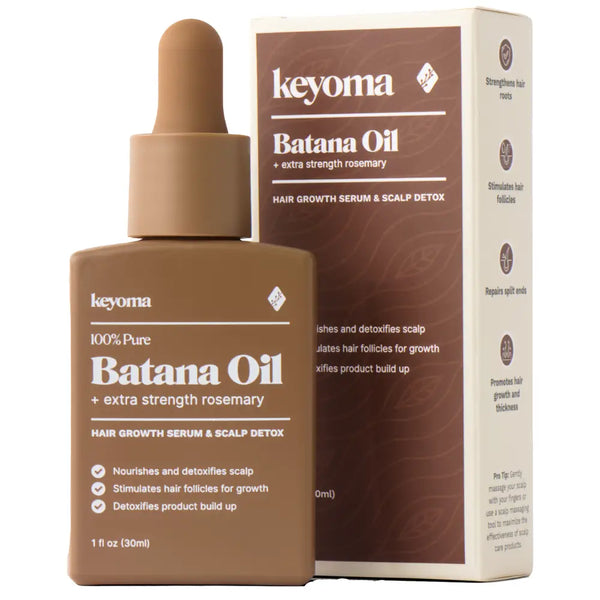
- 30-day supply $50
- 30% off for life $6
- Free haircare essentials kit $33
- Free custom wooden comb $10
- Free scalp massager $15
- Free eco-friendly travel bag $8

